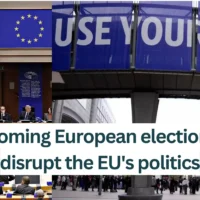Belgium (Brussels Morning Newspaper) – Europe’s distribution grids need to be urgently modernised to enable massive electrification of transport, heating and industry, integrate renewables and withstand more frequent extreme weather and cyber threats.
A major new report by Eurelectric, released during its annual meeting in Athens, emphasizes the urgent need to modernize Europe’s distribution grids. The “Grids for Speed” study shows that annual investments should increase from €33 billion to €67 billion between 2025 and 2050, approximately 20% of the EU’s 2023 fossil fuel import expenditure. Modernizing the grid is expected to significantly reduce fossil fuel imports, create over 2 million jobs, achieve greater energy savings, and provide a more reliable power supply. Additionally, it will accelerate the decarbonization of Europe’s economy.
How Are Societal Shifts Impacting Europe’s Energy System?
The report highlights that societal changes are transforming Europe’s energy system at a disruptive speed. By 2050, electricity is projected to comprise 60% of final energy use, up from 23% today. Renewable capacity will increase six-fold from 2020 levels, with 70% of renewable generation and storage connecting at the distribution level.
The demand for connection requests is growing faster than grid modernization efforts and will continue to rise as the electrification of end-use sectors progresses. These developments are putting a strain on the existing grid infrastructure.
What Are the Financial Implications and Benefits of Grid Modernization?
To alleviate the strain on the grid, annual investments in new and modernized infrastructure, including digitalization, should reach €67 billion from 2025 to 2050, representing about 0.4% of the EU’s GDP. The study notes that forward-looking strategies such as anticipatory investments, optimal asset management, and grid-friendly flexibility could lower this requirement to €55 billion per year if properly implemented.
Investing in grid modernization will accelerate electrification and help the EU save €309 billion annually on fossil fuel imports from 2040 to 2050. Failure to invest, on the other hand, would jeopardize 74% of prospective connections in key decarbonization technologies like electric vehicles (EVs), heat pumps, and renewables.
What Actions Are Necessary for Successful Grid Modernization?
Eurelectric’s president and E.ON CEO, Leonhard Birnbaum, asserts that for a successful energy transition, the EU requires massive additional grid capacity, necessitating the doubling of investment volumes for distribution system operators. While this demands significant ramp-up, the cost of not investing is even higher. Attracting investors with attractive returns, advancing technology, and fast-tracking electrification are crucial for managing distribution fees.
The report calls on national authorities to implement agreed legislation, such as anticipatory investments, and adapt regulatory regimes to support the investment surge. This includes eliminating investment caps, fast-tracking grid permitting and procurement procedures, and de-risking investments to encourage private funding while opening up public financing through the EU budget.
Future-proofing the grid also depends on the supply chain’s ability to scale. Challenges such as copper shortages, talent deficits, extended manufacturing lead times, and high transformer costs must be addressed through strategic planning, enhanced collaboration between policymakers and industries, and new training initiatives to ensure a skilled workforce.
Eurelectric urges policymakers at both national and regional levels to secure grid investments, strengthen supply chains, and unleash the societal benefits outlined in the “Grids for Speed” report.



